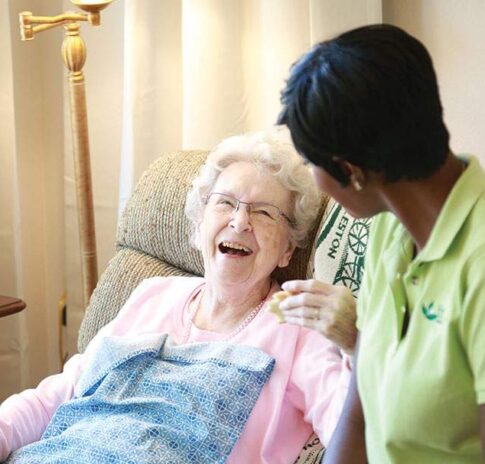 Muhammed Ali who floated like a butterfly in the boxing ring gave a face to the disease. Did he give up? No. He lit the Olympic Torch in 1996.
Muhammed Ali who floated like a butterfly in the boxing ring gave a face to the disease. Did he give up? No. He lit the Olympic Torch in 1996.
Michael J Fox battles it too, yet he has his own successful sitcom and has raised more than $450 million in research to bring about a cure.
These are just two people among the 1.5 million Americans who battle Parkinson’s disease yet lead rich and fulfilling lives. April Is Parkinson’s Awareness Month, a time to educate people about this illness and the many misconceptions that surround it. It’s also time to applaud those who valiantly fight the illness and live with its crippling side effects.
Parkinson’s disease is a progressive neurological condition. Its onset is gradual, often starting with a tremor in the hand. Parkinson’s disease is the second most common degenerative disease behind Alzheimer’s disease. Although it’s not considered fatal, victims can succumb to complications with swallowing that can cause choking.
What Are The Symptoms?
Some symptoms of Parkinson’s can even appear 10 years before a, accurate diagnosis is made. Symptoms may even come and go initially and may include:
- Trembling in the hands, legs, arms, trunk
- Rigidity or stiffness of the legs and trunk
- Slowness of movement or gait
- Impaired balance and coordination
- Slurred speech
- Problems with writing
Other less common symptoms are constipation, loss of smell, heavy excessive sweating, and acting out your dreams at night.
What Are the Risk Factors?
- Age. Very rarely are young people diagnosed with Parkinson’s. It usually begins in mid-50s, but is most common among people age 60 or older.
- Heredity. If anyone in your immediate family has Parkinson’s disease, your risk factors increase. In the past 10 years, researchers have identified a number of rare instances where Parkinson’s disease appears to be caused by a single genetic mutation. In these cases, the mutated gene is passed from generation to generation.
- Sex. Men are more likely to develop Parkinson’s disease than women.
- Exposure to herbicide or pesticides
How Is Parkinson’s Diagnosed?
Unfortunately, there is not test to confirm Parkinson’s disease which is why it is often misdiagnosed. A neurologist is often the type of physician you should visit and will ask for your medical history, evaluate your symptoms, and conduct a neurological and physical examination.
In 2011, the Food and Drug Administration (FDA) approved a specialized imaging technique called DaTscan that allows doctors to capture detailed pictures of the dopamine system in your brain. This test by itself cannot diagnose Parkinson’s but has gone a long way in helping doctors confirm it.
He/she may also give you a Parkinson’s medication called carbidopa-levodopaion. Significant improvement with this medication will often confirm your diagnosis of Parkinson’s disease. Due to the lack of definitive testing for the illness, it may take time to accurately diagnose this illness.
What Is Being Done
The most common drug at this time is carbidopa-levodopaion, which is a natural chemical that passes into your brain and is converted to dopamine. Other medications include dopamine agonists, MAO-B inhibitors, Catechol O-methyltransferase (COMT) inhibitors, anticholinergics, and Amantadine. Medications may greatly reduce many of these symptoms, although reactions and side effects to the medication vary from person to person. Your doctor may suggest exercises to keep you as mobile as possible to increase your muscle strength, flexibility and balance.
If you do not respond to medication, surgery may be suggested. A therapy called deep brain stimulation (DBS) is a procedure in which electrodes are implanted into the brain and connected to a small electrical device called a pulse generator that can be externally programmed. The surgery can reduce the need for levodopa and related drugs and the involuntary movements that are a common side effect of levodopa. It also helps to alleviate tremors, slowness of movements, and gait problems.
For further informational about Parkinson ’s disease, you can check out these resources:
- American Parkinson Disease Association
- National Parkinson Foundation
- Parkinson Alliance
- Michael J Fox’s Foundation for Parkinson’s Research
- Parkinson’s Action Network
- Parkinson’s Resource Organization
At FirstLight Home Care, we have no cure for the disease, nor any way to prevent its ruthless progression, but we can make your life easier. We can help you with daily activities such as dressing, eating, bathing and writing — which can be difficult for people with Parkinson’s disease. In addition to a supportive hand, we can provide a compassionate ear, helping you to understand what you can do versus can’t do.
